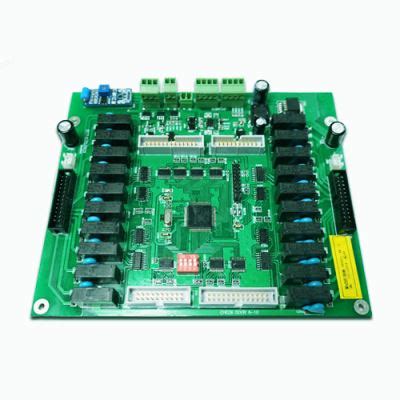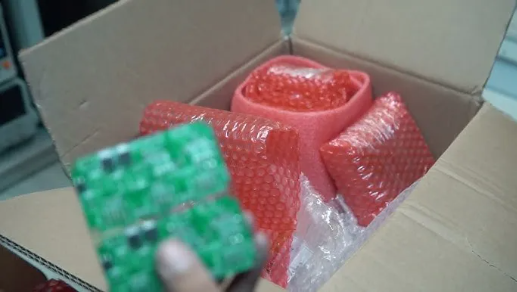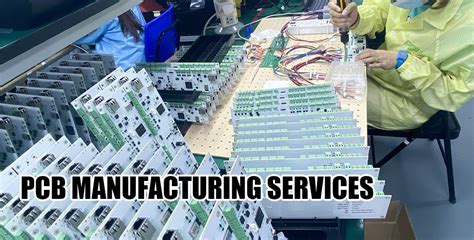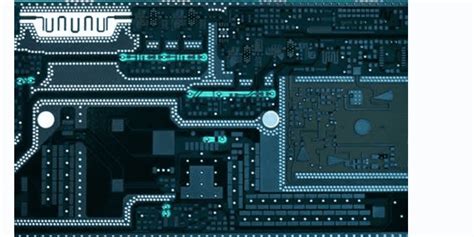Exploring the Advantages of SMT PCBA in Modern Electronics Industries

Key Takeaways
The integration of Surface Mount Technology (SMT) in Printed Circuit Board Assembly (PCBA) presents significant advantages that are critical for the evolving electronics industry. One of the most notable benefits is the enhancement of efficiency. The automation of pcb assembly processes inherently reduces manual labor costs and minimizes human error, thereby streamlining production timelines. Additionally, with SMT, components can be placed more densely on the printed circuit boards, which ties into another key takeaway: miniaturization. This capability allows manufacturers to develop smaller, yet highly functional electronic devices.
Moreover, cost-effectiveness cannot be overlooked. The reduced size and weight of assemblies mean that materials are utilized more efficiently, which lowers overall production expenses. With strategic innovations in SMT, companies can further decrease costs while maintaining high quality in their products.
To summarize these points in a table format:
| Key Takeaways | Description |
|---|---|
| Efficiency | Automation reduces labor and errors in production |
| Miniaturization | Denser component placement allows for smaller devices |
| Cost-Effectiveness | Efficient material use lowers production expenses |
In conclusion, embracing SMT PCBA Not only supports the current demands for smaller, lighter, and more efficient electronic devices but also sets a precedent for future advancements in the industry.
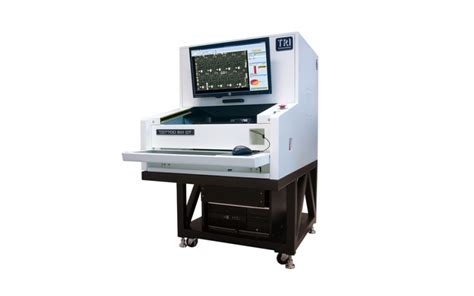
Introduction to Surface Mount Technology (SMT)
Surface Mount Technology (SMT) has emerged as a pivotal innovation in the realm of Printed Circuit Board Assembly (PCBA), revolutionizing the way electronic components are mounted onto circuit boards. This technique enables components to be placed directly onto the surface of the board rather than being inserted through holes, which was the standard practice in earlier technologies. The transition to SMT PCBA not only facilitates a higher density of components but also significantly enhances the overall performance and reliability of electronic devices. By adopting SMT, manufacturers benefit from greater flexibility in design, allowing for more complex circuits in a smaller footprint. This miniaturization is critical as consumer demand for smaller and more efficient gadgets continues to rise. Furthermore, the streamlined assembly process offered by SMT reduces manufacturing times and labor costs, making it a financially viable option for businesses looking to maintain competitiveness in a rapidly evolving electronics market. As industries continue to embrace innovation, it is clear that SMT PCBA stands out as a cornerstone technology that not only meets current demands but also paves the way for future advancements in electronics manufacturing.
Evolution of Printed Circuit Board Assembly (PCBA)
The evolution of Printed Circuit Board Assembly (PCBA) has been a pivotal aspect of modern electronics, significantly advancing the way electronic devices are manufactured. Traditionally, PCB assembly relied heavily on through-hole technology, which involved inserting components into pre-drilled holes and soldering them from the opposite side. This method, while effective, had limitations in terms of efficiency and size constraints. With the advent of Surface Mount Technology (SMT), a transformative shift occurred in the PCB assembly process. SMT allows for components to be mounted directly onto the surface of the printed circuit board, enabling greater flexibility in design and layout. This evolution not only paved the way for increased miniaturization of devices but also streamlined production processes, leading to enhanced efficiency and quicker turnaround times. Manufacturers began to realize that by adopting SMT in their PCB assembly processes, they could achieve a higher component density without sacrificing reliability. The transition to SMT has redefined how we approach pcba, enabling more complex designs while minimizing the footprint of electronic devices. As industries continue to innovate and push for more compact solutions, understanding this evolution offers insights into how SMT has become an essential component in modern electronics manufacturing.
Key Benefits of SMT in Modern Electronics
The adoption of Surface Mount Technology (SMT) has revolutionized the landscape of Printed Circuit Board Assembly (PCBA), bringing numerous advantages that enhance both performance and production capabilities. One of the key benefits is increased efficiency; the streamlined process of pcb assembly allows for faster placement of components, reducing assembly time significantly. This efficiency is further supported by advanced automation and machines, leading to a more productive workflow. Moreover, SMT facilitates miniaturization, allowing manufacturers to produce smaller and more compact devices without sacrificing performance. This shift is crucial in industries where space is at a premium, as smaller components can fit into tighter designs, enabling innovation in product development.
Cost-effectiveness is another critical advantage offered by SMT in pcba processes. By eliminating certain steps and utilizing smaller components, manufacturers can lower material costs and reduce waste. According to industry experts, “The integration of SMT not only simplifies the assembly process but also enhances reliability and longevity in products.” Consequently, these benefits directly contribute to competitive pricing for consumers while maintaining high-quality standards.
“Embracing SMT technology is no longer an option but a necessity for companies seeking to thrive in fast-paced electronics markets.”
This landscape continues to evolve as manufacturers seek smarter solutions for assembly challenges, making SMT PCBA integral for future innovations in the electronics industry.

Enhancing Efficiency with SMT PCBA Techniques
The adoption of Surface Mount Technology (SMT) within Printed Circuit Board Assembly (PCBA) has revolutionized the electronics industry, substantially enhancing manufacturing efficiency. One of the key techniques employed is automated placement, where components are swiftly and accurately positioned on the board by machines, significantly reducing assembly time compared to traditional methods. This high-speed process allows for increased production rates, which is essential in meeting the growing demand for electronic devices. Additionally, SMT techniques facilitate a smaller footprint for components, meaning that more can be placed on a single board without compromising performance. This not only streamlines the assembly process but also maximizes the use of space in electronic devices. Furthermore, the integration of advanced inspection technologies ensures that each pcb assembly meets stringent quality standards, minimizing defects and rework cycles. Overall, these innovations in SMT PCBA lead to a more efficient assembly process that drives down costs while improving reliability and performance in modern electronics manufacturing.
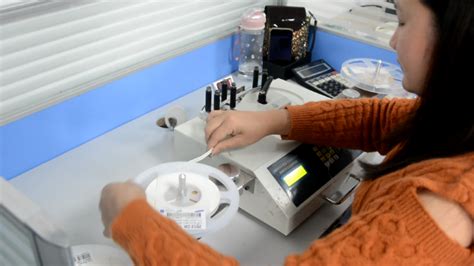
Miniaturization: The Impact of SMT on Component Size
One of the most significant advancements brought about by Surface Mount Technology (SMT) is the remarkable capability for miniaturization in Printed Circuit Board Assembly (PCBA). By allowing components to be mounted directly onto the surface of circuit boards rather than being inserted into drilled holes, SMT facilitates a higher density of components within a given area. This shift is crucial because as electronic devices become increasingly compact, manufacturers must prioritize space efficiency without compromising performance. The reduction in size not only leads to sleeker product designs but also contributes to a lighter overall weight, which is vital for consumer electronics and portable devices. Furthermore, the smaller size of components used in SMT-based PCB assemblies can lead to lower material costs and decreased manufacturing expenses due to reduced material wastage. Another important aspect is that with a smaller component footprint, thermal management can be improved because the shorter distances between components can lead to better heat dissipation strategies. Thus, the impact on miniaturization driven by SMT has been transformative for modern electronics industries, enabling them to engineer complex functionalities into compact designs that enhance usability and expand application possibilities across various sectors.

Cost-Effectiveness: How SMT Reduces Manufacturing Expenses
The integration of Surface Mount Technology (SMT) in Printed Circuit Board Assembly (PCBA) has significantly transformed the landscape of electronic manufacturing, particularly in terms of cost-effectiveness. One of the primary advantages of SMT is its ability to reduce manufacturing expenses through enhanced automation and streamlined processes. By utilizing smaller components that can be densely packed onto the PCB, manufacturers can save on both material costs and board space. This miniaturization not only lowers the amount of raw materials needed but also facilitates a quicker assembly process, as fewer manual steps are required for placement and soldering. Additionally, with SMT, companies often experience reduced production times, which further decreases labor costs associated with PCB assembly. The ability to automate the assembly process means that higher volumes can be produced more efficiently, maximizing productivity while minimizing waste. Overall, adopting SMT PCBA techniques leads to a more sustainable manufacturing approach by optimizing resource allocation and enhancing overall profitability for electronics companies.
Future Trends in SMT and PCBA Technologies
As the electronics industry continues to evolve, the adoption of Surface Mount Technology (SMT) in Printed Circuit Board Assembly (PCBA) is anticipated to expand significantly. One of the most noteworthy trends is the shift towards increased automation within pcb assembly processes. This automation not only enhances the speed of production but also improves accuracy and reduces human error, ultimately leading to higher-quality products. Furthermore, innovations in materials used for both components and substrates are leading to more efficient pcba designs, enabling better thermal management and improved performance at smaller sizes. Another emerging trend is the incorporation of advanced technologies such as artificial intelligence and machine learning into SMT processes. These technologies are facilitating real-time monitoring and predictive maintenance, which can greatly minimize downtime and resource waste during pcb assembly. Additionally, the focus on sustainability is prompting manufacturers to explore eco-friendly materials and processes that reduce electronic waste, aligning with global environmental standards. As demand for smaller, more efficient electronic devices grows, adaptation to these trends will be essential for companies striving to maintain a competitive edge in the SMT pcba landscape.
Case Studies: Success Stories of SMT PCBA in Applications
In examining the practical implications of Surface Mount Technology (SMT) in Printed Circuit Board Assembly (PCBA), several notable case studies exemplify its profound impact across various industries. For instance, in the telecommunications sector, a leading manufacturer adopted SMT techniques to enhance the performance and reliability of their products. By transitioning to pcb assembly methods that utilize smaller components and higher packing density, they achieved a remarkable reduction in board size without compromising functionality. This shift not only enabled the production of lighter devices but also improved product aesthetics and customer appeal. Similarly, in the realm of consumer electronics, a renowned brand implemented SMT processes to streamline their manufacturing operations. This initiative led to enhanced production speed and significant cost savings. Thanks to lower material wastage and reduced assembly time, this organization could introduce innovative products to the market more quickly than competitors. These examples illustrate how leveraging SMT PCBA can drive technological advancement, offering manufacturers competitive advantages through improved performance metrics and enhanced efficiency in their production lines. The versatility of pcb assembly techniques continues to reveal promising pathways for innovation across an array of sectors.
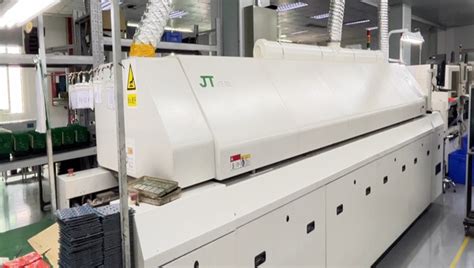
Conclusion
In summary, the implementation of Surface Mount Technology (SMT) in Printed Circuit Board Assembly (PCBA) has revolutionized the landscape of modern electronics. The shift to SMT has significantly enhanced the efficiency of pcb assembly processes, allowing for faster production times and reducing the risks associated with manual assembly. Moreover, the trend towards miniaturization has empowered manufacturers to create smaller, more complex devices without sacrificing quality or reliability. This is particularly important in an era where consumer demand leans heavily towards compact and high-performance electronics. Additionally, the cost-effectiveness of adopting SMT techniques cannot be overlooked; by minimizing component usage and optimizing layout designs, companies can achieve lower manufacturing expenses while enhancing product functionality. As we look towards future trends in SMT and PCBA technologies, it is evident that these advancements will continue to play a pivotal role in driving innovation and meeting the evolving needs of various industries. The success stories surrounding SMT PCBA serve as a testament to its impact and effectiveness, reinforcing its position as a critical component in the advancement of technology. Ultimately, embracing SMT not only meets present demands but sets the stage for future growth and development within electronics manufacturing.
FAQs
What is SMT PCBA?
SMT PCBA, or Surface Mount Technology Printed Circuit Board Assembly, refers to a method in electronics where components are mounted directly onto the surface of printed circuit boards (PCBs) rather than being inserted into holes.
What are the key advantages of SMT in PCB assembly?
The primary advantages of SMT in PCB assembly include enhanced manufacturing efficiency, allowing for faster production rates and reducing assembly times. Additionally, it promotes miniaturization, enabling smaller components to be used without sacrificing performance.
How does SMT enhance the efficiency of PCBA?
With SMT, automated assembly processes can significantly reduce human error and labor costs. The techniques often allow multiple components to be placed simultaneously, streamlining the entire PCBA operation.
Why is miniaturization important in modern electronics?
Miniaturization enables manufacturers to create compact electronic devices without compromising functionality. This advancement not only saves space but also contributes to lightweight designs, making products more portable.
Is SMT cost-effective compared to traditional methods?
Yes, SMT PCBA methods generally reduce manufacturing expenses by allowing lower production costs through fewer materials needed for PCB layouts and less labor-intensive processes.

